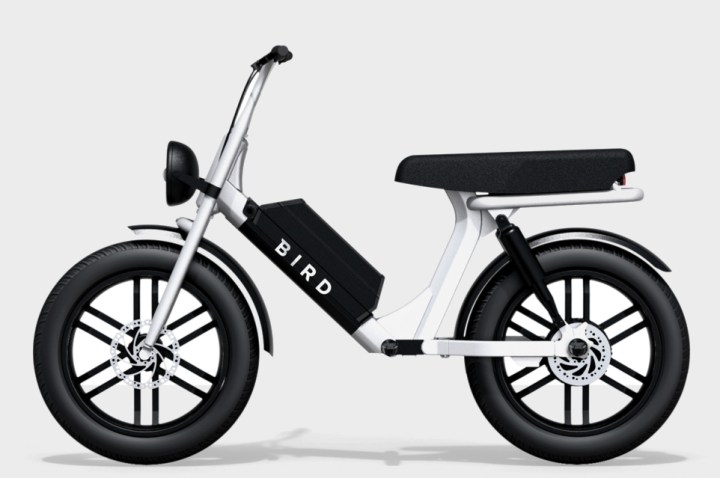
Bird has just unveiled a chunky-looking electric bike that it plans to launch alongside its scootersharing service.
The Santa Monica, California-based company said it will introduce the Bird Cruiser this summer in select markets before making a decision on whether to roll it out more widely.
The two-wheeler features 20-inch wheels and is powered by a 52-volt battery, though Bird is yet to reveal its top speed and how far it can travel on a single charge.
The moped-like machine also includes full suspension and a long, cushioned seat ensuring a comfy ride for up to two people, as well as a digital display showing ride information.
Photos of the Cruiser show the bike with foot pegs, giving it the appearance of an electric moped, though there’s also a version with pedals so you can put your legs to work on flat terrain, preserving battery power in the process. A Bird spokesperson told Digital Trends it will “offer the best option for each particular market” when it launches the vehicle in the coming months.
The Cruiser’s beefy look is partly to help it withstand the challenging demands of daily life in a bikesharing scheme — think inclement weather, rough riders, and vandals.
“Designed and engineered in California, Bird Cruiser is an inclusive electric-powered option that is approachable, easy-to-ride, and comfortable on rough roads,” Travis VanderZanden, founder and CEO of Bird, said in a release this week.
Searching for new revenue streams, Bird recently began sales of a new stand-up scooter that it’s also adding to its shared fleet. It’s not clear if it also plans to sell the Cruiser.
App-based services using shared two-wheelers have mushroomed in the last couple of years, growth that has brought with it its own set of problems. The dockless schemes, for example, can lead to sidewalks becoming clogged up with rentable bikes and scooters, and there have been plenty of accidents — some fatal — involving riders and sometimes innocent bystanders, too.
Local lawmakers were slow to grasp the fast-growing popularity of the services, though this has changed recently with the introduction of regulations that limit the number of services and available vehicles. Meanwhile, some providers have launched programs to encourage greater responsibility among riders.


